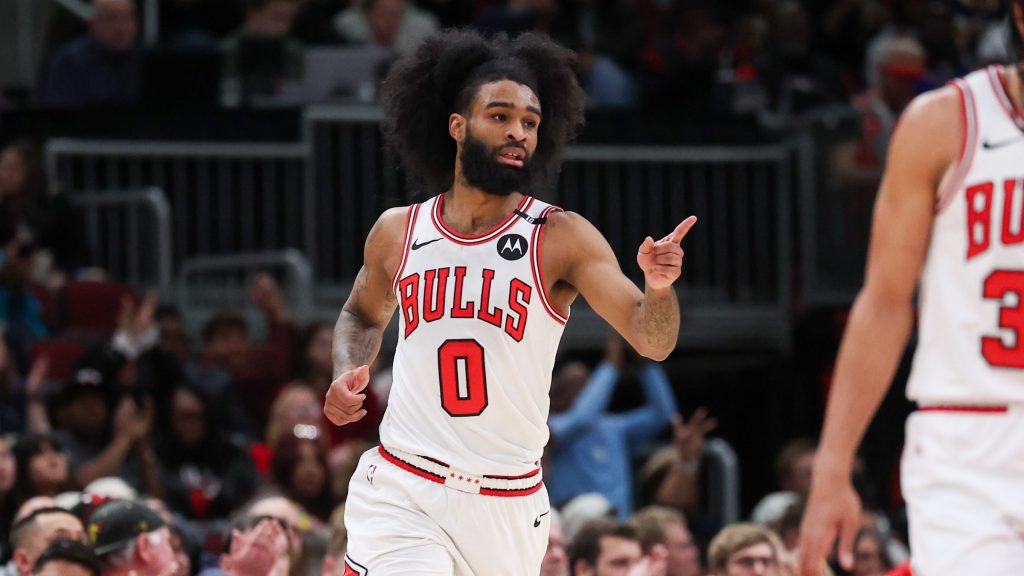Coby White’s Shooting Skills and Versatility
Coby White is widely recognized for his shooting ability.
As a player with a career 36.7% shooting percentage from beyond the arc, White is both prolific and efficient when it comes to long-range shots. However, the true challenge for the Chicago Bulls guard has always been to showcase his talents beyond his signature shooting skill.
Rising to the Challenge Post-LaVine Trade
In the six weeks since the Bulls made the decision to trade Zach LaVine, White has concentrated on improving elements of his game beyond shooting—such as driving to the basket, creating opportunities for teammates, and increasing the overall pace of play. This adaptability has positively impacted his performance after the All-Star break, resulting in him being named the Eastern Conference Player of the Week on Monday, following an impressive average of 27.7 points and 46% shooting in three games.
Impact on the Team’s Success
The Bulls are currently enjoying a rare but positive period, winning five of their last six games, with White serving as the critical force behind their success.
The trade of LaVine raised expectations for White, placing him at the center of the offense for the rest of the season. So far, he has met those expectations admirably.
Increased Responsibilities and Performance
Leading up to the All-Star break, White averaged 14.3 field-goal attempts per game, placing him third on the team behind LaVine and Nikola Vučević. However, in the 13 games since the break, that figure has increased to 18.6 attempts per game, making him the team’s leader in shots, made field goals, points, and minutes played during that stretch.
Adjusting to Defensive Strategies
Adapting to change can be challenging, especially when facing top defenders like Dillon Brooks from the Houston Rockets, who often guard White aggressively. Opponents are now attempting to limit White’s 3-point shooting, which has pushed him to score more of his points in the paint.
Since the All-Star break, he has increased his attempts at the rim by 2.1 per game and has scored the fourth-most points in transition (377) in the NBA this season, attributing 32% of his total scoring to fast-break opportunities while forcing fouls on 13.1% of those plays.
Embracing Growth and Consistency
“Many teams have been trying to force me off the line, particularly during transition,” White explained. “I’m simply taking advantage of what the defense offers.”
This transition mindset has influenced the Bulls roster as a whole. Early in the season, the team struggled with physicality, unable to draw fouls or score effectively at the rim. Post-LaVine trade, the remaining players have adopted a new approach—focusing on drawing fouls and challenging opponents despite their size limitations.
Looking Ahead Amidst Uncertainty
Despite the promise shown, White acknowledges the challenges he has faced since entering the league, often comparing himself to other talents like Zion Williamson and Ja Morant. “Everyone’s journey is unique,” he said, emphasizing that growth takes time.
While White finished as the runner-up for Most Improved Player last season, uncertainty looms as the Bulls continue to reshape their roster without LaVine. With just one year left on his contract and various changes still to be clarified, White remains focused on his growth and development as a player.



